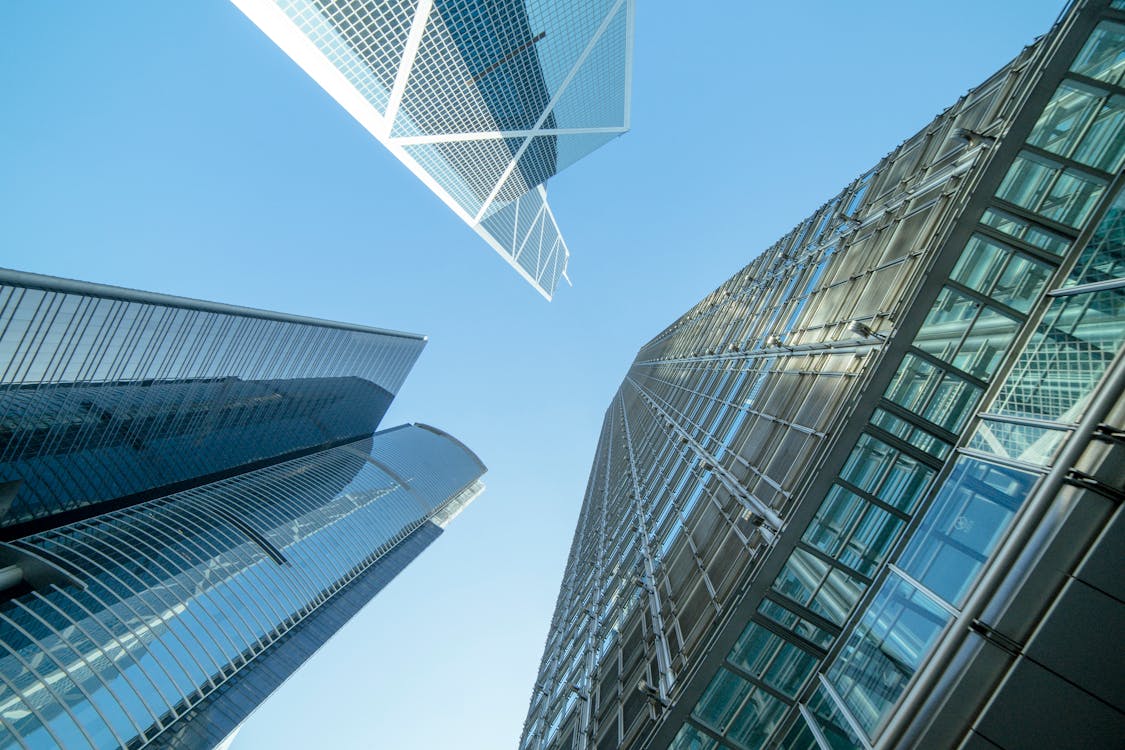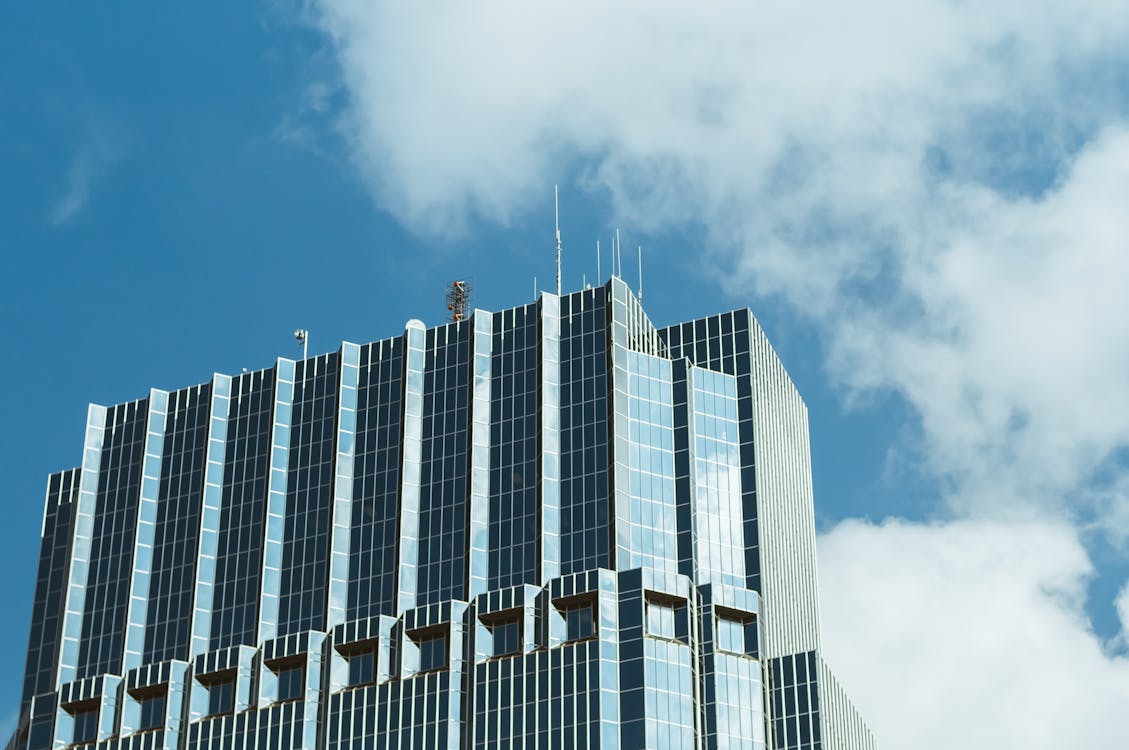Commercial buildings stand as modern marvels, showcasing a variety of architectural designs that captivate our attention. One common feature that often raises eyebrows is the prevalence of flat roofs in these structures. In this article, we delve into the intriguing world of commercial building design to answer the burning question: Why do commercial buildings have flat roofs?

Jimmy Chan
The Functionality Behind Flat Roofs:
Commercial buildings opt for flat roofs for a myriad of functional reasons. One key advantage lies in the utilization of space. Unlike pitched roofs, flat roofs provide an expansive and practical area that can house HVAC systems, solar panels, and other essential equipment. This efficient use of space allows for optimal functionality without compromising the building’s overall design.
Additionally, the ease of maintenance is a significant factor. Flat roofs make inspections, repairs, and installations more straightforward, ultimately reducing maintenance costs over the building’s lifespan. This practicality is particularly crucial for large commercial structures, where accessibility and convenience play pivotal roles in ongoing operations.
Optimal Space Utilization
Versatility in Equipment Placement
The flat expanse of the roof provides a strategic canvas for placing HVAC systems, ensuring optimal climate control within the commercial space. Additionally, the unobstructed surface is ideal for the placement of solar panels, promoting sustainable energy solutions and reducing the building’s carbon footprint.
Streamlined Maintenance Processes
The choice of flat roofs extends beyond functionality to practicality in maintenance. The simplicity of flat roof designs simplifies inspection, repair, and installation processes, resulting in a cost-effective approach over the building’s lifespan. This advantage is particularly crucial for large-scale commercial structures where accessibility and streamlined maintenance are paramount.
Cost-Effective Maintenance
Reduced complexity in maintenance procedures translates to lower costs, making flat roofs an economical choice for commercial buildings. The ease of access facilitates regular inspections and swift repairs, minimizing downtime and ensuring operational continuity.
Architectural Harmony
Despite their utilitarian advantages, flat roofs seamlessly blend with modern architectural styles, enhancing the overall aesthetic appeal of commercial buildings.
Contemporary Aesthetics
Flat roofs contribute to a clean and contemporary aesthetic, aligning with modern architectural trends. This design choice allows commercial structures to maintain a sleek and sophisticated appearance, creating a visual harmony with the surrounding urban landscape. The adoption of flat roofs in commercial buildings is a strategic decision driven by the optimal utilization of space, streamlined maintenance processes, and the desire to maintain architectural harmony. The multifaceted benefits of flat roofs contribute to their popularity in contemporary commercial construction, shaping the skyline with both functional and visually appealing structures.
Energy Efficiency and Sustainability:
The trend of incorporating environmentally sustainable practices in construction has been steadily rising, and flat roofs play a role in this movement. These roofs provide an ideal platform for the installation of solar panels, promoting energy efficiency and reducing a building’s carbon footprint. The unobstructed space on flat roofs allows for maximum exposure to sunlight, making them a perfect canvas for harnessing solar power.
Furthermore, the design of flat roofs supports green roofing systems, including the cultivation of vegetation. This not only contributes to the building’s insulation but also aids in reducing the urban heat island effect. The integration of green elements on flat roofs aligns with the growing emphasis on eco-friendly construction practices.
Architectural Aesthetics:
Beyond functionality, the choice of flat roofs in commercial buildings often aligns with contemporary architectural aesthetics. The clean lines and sleek appearance of flat roofs contribute to a modern and minimalist design, fitting seamlessly into urban landscapes. Architects often opt for flat roofs to create a cohesive and visually appealing structure that complements the surrounding environment. Architectural aesthetics play a pivotal role in defining the visual identity of commercial buildings. A recurring and noteworthy feature that contributes to this aesthetic appeal is the prevalence of flat roofs in contemporary designs. So, why do commercial buildings have flat roofs? The answer lies in the deliberate choices made by architects to achieve a sleek and modern appearance. Flat roofs offer clean lines and a minimalist aesthetic that seamlessly integrates with the overall design, creating a visually appealing and cohesive look for commercial structures. This deliberate emphasis on architectural aesthetics demonstrates how the choice of flat roofs is not just about functionality but also about creating an impressive and harmonious visual impact in the urban landscape. In essence, the use of flat roofs in commercial buildings is a strategic design decision that marries functionality with a modern and sophisticated aesthetic.

Scott Webb
Cost Considerations:
Cost-effectiveness is a crucial factor in commercial construction projects. Flat roofs, compared to their pitched counterparts, generally require fewer materials and less labor during construction. The simplicity of their design translates to reduced installation time and lower overall expenses. This cost efficiency is an attractive feature for developers and businesses looking to optimize their construction budgets without compromising on quality.
Adapting to Urban Spaces: In densely populated urban areas, space is a premium commodity. Flat roofs allow for the construction of additional floors or rooftop amenities, transforming commercial buildings into multi-functional spaces. From rooftop gardens to outdoor meeting areas, the versatility of flat roofs enhances the overall utility of commercial structures in urban landscapes.
The choice of flat roofs for commercial buildings goes beyond mere aesthetics. It’s a strategic decision rooted in functionality, sustainability, cost-efficiency, and adaptability to modern urban environments. As architectural trends continue to evolve, flat roofs stand as a testament to the innovative solutions that shape the landscape of commercial construction. The next time you gaze upon a commercial building with a flat roof, appreciate the thoughtful considerations that went into its design, making it a symbol of both form and function in the ever-changing world of architecture.
